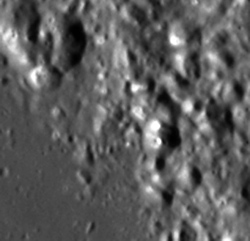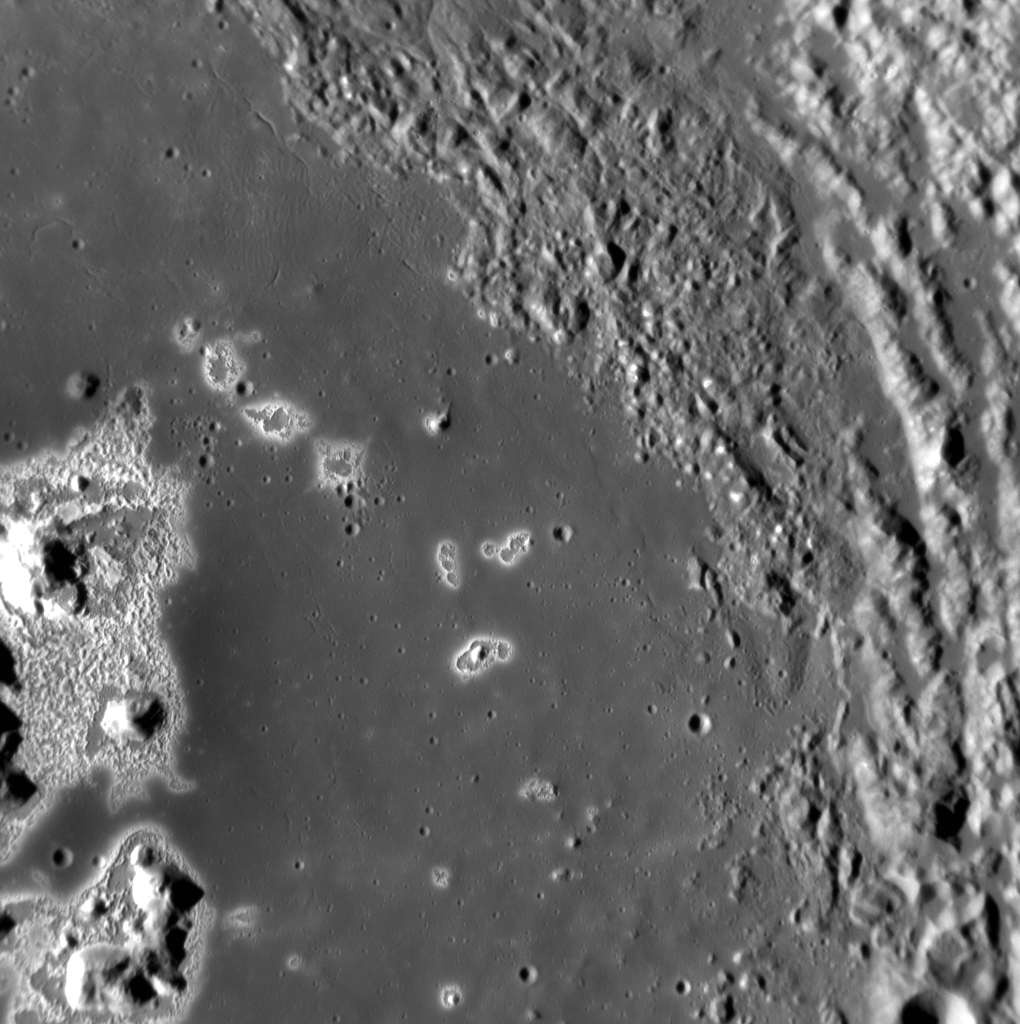MESSENGER targeted-observation image of the interior of Eminescu crater
A recent image acquired by NASA’s MESSENGER spacecraft shows the interior of Eminescu, a youngish 130-km (80 mile) wide crater just north of Mercury’s equator. Eminescu made science headlines last year with MESSENGER’s discovery of curious eroded blotches called “hollows” scattered across its interior and surrounding its central peak, and now it looks like the spacecraft may have spotted some of these strange features in their earliest stages of formation along the inner edge of the crater’s rim.
First announced in September 2011, hollows have now been identified in many areas across Mercury. They had showed up in previous images as only bright spots, but once MESSENGER established orbit in March 2011 and began its high-resolution imaging of Mercury’s surface it soon became clear that these features were something totally new.
The lack of craters within hollows indicates that they are relatively young. It was suggested that they may be the result of an ongoing process on Mercury — a suggestion supported by this recent image, acquired on November 19, 2012.
 In addition to the hollows seen in the smooth central part of the crater and around the base of the central peak, there are also some small bright spots visible within the knobby terrain extending from the base of the crater wall (see detail at right). These bright spots could well be very young hollows, revealing a process in action that is, as far as we know, unique to the planet Mercury.
In addition to the hollows seen in the smooth central part of the crater and around the base of the central peak, there are also some small bright spots visible within the knobby terrain extending from the base of the crater wall (see detail at right). These bright spots could well be very young hollows, revealing a process in action that is, as far as we know, unique to the planet Mercury.
It’s thought that hollows are formed by the solar wind constantly blasting Mercury’s surface, scouring away deposits of volatile materials in its crust that have been left exposed by impacts.
The image above shows an area about 42 km across. Read more on the MESSENGER mission site here.
Image credit: NASA/Johns Hopkins University Applied Physics Laboratory/Carnegie Institution of Washington

